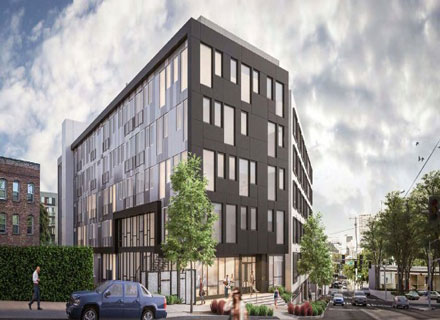How common property assets can supercharge your upfront deductions

Most investors would be aware that if you own a unit within a complex, you’ll have an entitlement to claim over the common property assets based on your share of ownership. This percentage share is commonly referred to as a unit entitlement and can be found on your strata plan or plan of subdivision. You’ll see an entitlement per lot and then an aggregate for the sum of all lots.
So, if your unit entitlement is 60 and the total of all lots is 800, then you’ll have a 7.5% claim on the common assets. Typically, within larger developments, your percentage claim is very small, but it can still contribute significantly to the claim based on the high values of common assets.
There are two main common property depreciation categories, the building structure and the plant assets.
Common area deductions can give your depreciation schedule a real kick in the pants, here’s why.
If we look at the building structure in isolation, the sheer construction value of these areas can lead to significant claims. Your specific unit may have a construction cost of say $200,000 or thereabouts, but the complex consisting of foyers, levels, basements, gyms, pools and the like could be in the tens of millions of dollars. Take for example a unit at 618 Lonsdale Street Melbourne. The construction value of one of the units we estimated to be around $1550,000 excluding plant, whereas the common areas came in at around 35 million. Based on the typical unit entitlement within this development, around $73,000 worth of common property building areas are directly attributable to each investor.
However, the real kick for the upfront deductions can be found in the plant and equipment assets. Thanks to ScoMo, our esteemed federal treasurer, these plant deductions are now only available to brand new units. Out of interest, at MCG 38.3% of our residential reports are on brand new houses or units.
Looking again at 618 Lonsdale Street, we found 35 separate plant and equipment categories. These include things like lifts, carpets, fire detection alarms, ventilation fans and the like. We found almost a million dollars’ worth of common property air conditioning plant but based on an individual unit entitlement, this gave a total of $1,903 to the investor as a deduction depreciating over 15 odd years. Air conditioning is one of those typically high-value assets within a large residential complex, and it’s not typically something that provides a high upfront deduction. The good news is that most things do. Of the 35 separate categories, 25 of them provided 100% of their depreciable value to the investor in year one.
Why? Well, assets that have an opening value of less than $301 that are not part of a set, can be written off at 100% right away. So even though there might have been over $35,000 worth of door closers for example, the individual investors share came to $150 in total. Door closers are one example of an instantly deductible asset but typically we also see things like gate motors, barbeque assets, fire alarm bells, fire extinguishers, gym assets like treadmills, pumps, proximity readers, swimming pool filters and more. Looking at the Lonsdale street case study, we uncovered $2,223 worth of instant deductions on these common property assets.
Common property is certainly the reason why units provide better deductions than houses in general, but it’s also interesting to analyse the way those deductions fall into the schedule. For a long list of items, those deductions will hit within the first year of ownership, which can provide a significant cash flow advantage to the investor.
